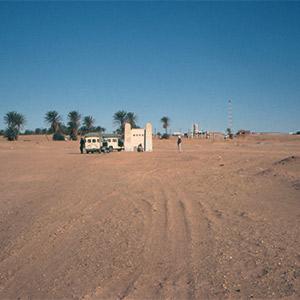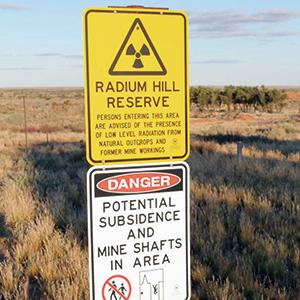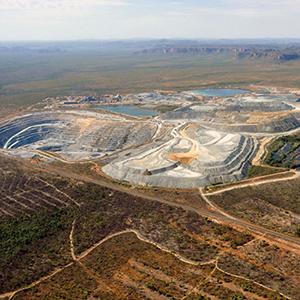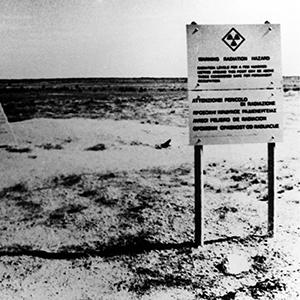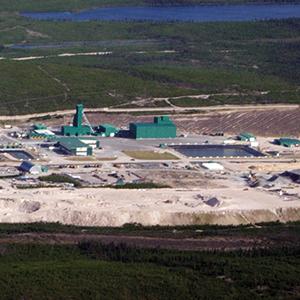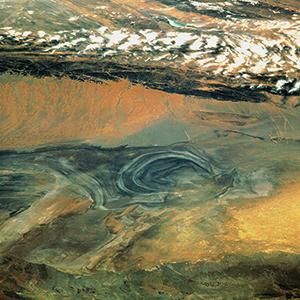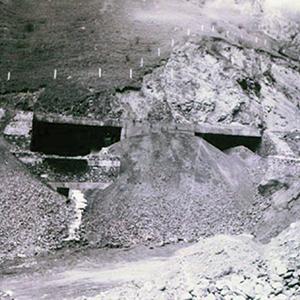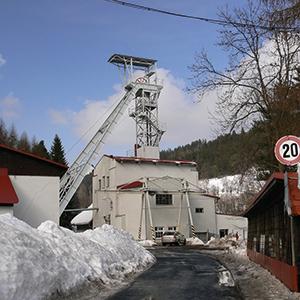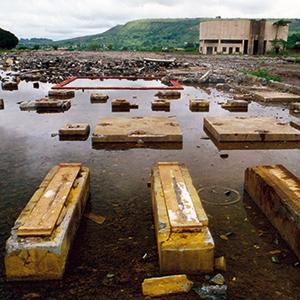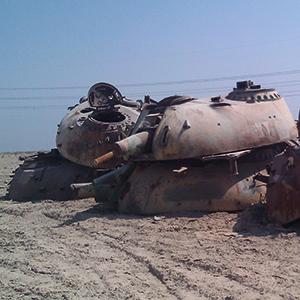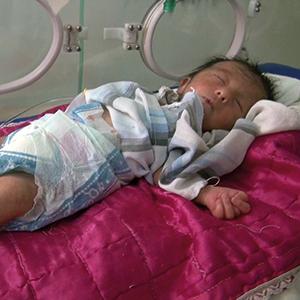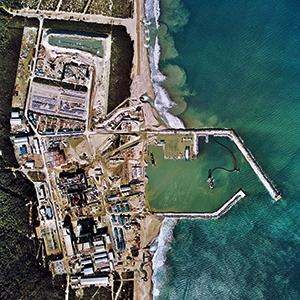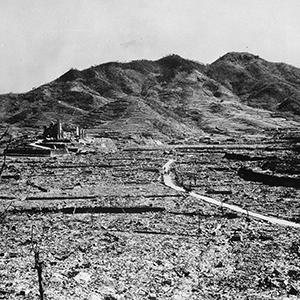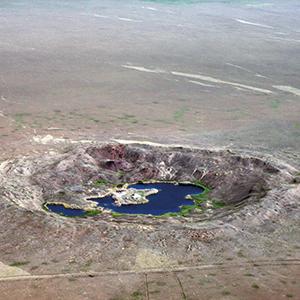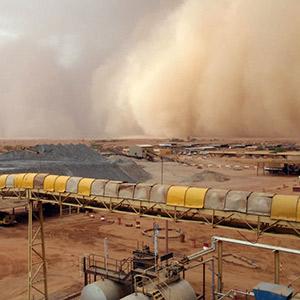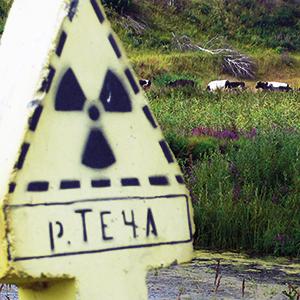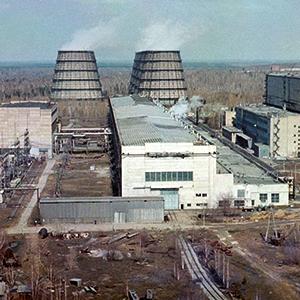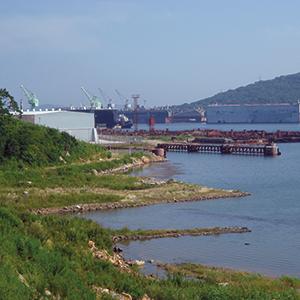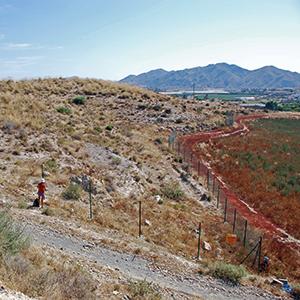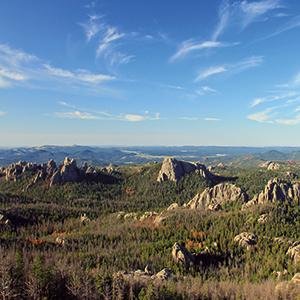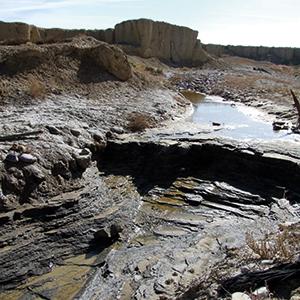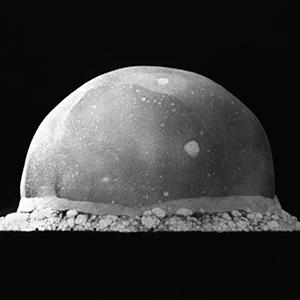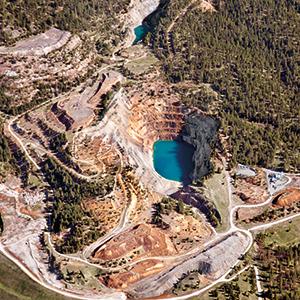Emu Field, Australia

After testing its first nuclear weapons off the west coast of Australia in 1952, the UK sought to test its newer models on land. In 1953, the British detonated two “Totem” nuclear bombs at Emu Field, exposing a large population to radioactivity.
Photo: An obelisk in Emu Field, marking “Ground Zero” of the nuclear detonation of Totem 1. Until today, levels of radioactivity in the area are above normal, which is why the obelisk carries a warning not to linger too long.
History
For their nuclear tests, the Australian government gave the UK a flat sandstone plateau in the Great Victoria Desert, called Emu Field. Due to a lack of weapons-grade plutonium-239, attempts were made to fill nuclear bombs with a higher proportion of plutonium-240. While cheaper and easier to produce, plutonium-240 is prone to spontaneous fission, which increases the risk of an uncontrolled nuclear chain reaction. The purpose of the “Totem” trials was to determine the acceptable limit of the amount of plutonium-240 in a nuclear weapon. Local Aboriginal groups such as the Pitjantjatjara, Tjarutja and Kokatha were not asked before testing commenced on their traditional lands. On October 15, 1953, Totem 1 was detonated at Emu Field, causing a cloud of radioactive dust to shoot up to 4,500 m. The plume drifted towards the East as so-called black mist, exposing people at nearby places such as Coober Pedy, Twelve Mile, Coffin Hill, Ernabella, Kenmore Park, Everard Park, Granite Downs and Mabel Creek to high levels of radioactivity. By the time the plume reached the Australian coast near Townsville three days later, the second nuclear bomb, Totem 2, was detonated, producing an 8,500 m-high mushroom cloud. The explosion was felt as far as 500 km away. After the Totem tests, the UK abandoned Emu Field. Future nuclear testing was performed on the Montebello Islands and at the permanent test site in Maralinga (see the corresponding poster in this exhibition).
Health and environmental effects
The use of nuclear weapons contaminated great tracts of Aboriginal land, causing detrimental medical, psychological and social effects. In 1985, a Royal Commission was set up in order to investigate the effects of British nuclear testing in Australia. Its final report stated that Totem 1 was fired under wind conditions that would knowingly produce unacceptable levels of fallout and did not take into account the existence of people downwind of the test site. Measures undertaken by the army to ensure that people were informed about the tests and left the affected areas were deemed inadequate. The Commission stated that fallout from Totem 1 on inhabited regions exceeded the proposed limits and resulted in high radiation exposure for local Aboriginal people. At least 45 members of the Yankunytjatjara tribe experienced signs of acute radiation sickness (vomiting, peeling skin, bloody diarrhea, headaches) and more than half died soon thereafter. Similar effects were reported by the tribe of Kupa Piti Kunga Tjuta. A study estimated the total number of cancer deaths for all British nuclear tests in Australia to be 35. The study made clear, however, that these calculations did not take into consideration the two groups most acutely affected by radioactive exposure: Aboriginal people and the personnel directly involved in the tests. Other factors that were never taken into consideration were the increased susceptibility of children to radioactivity and the poor health status and distinctive lifestyle of Aborigines, which also led to a high vulnerability: lack of clothing and footwear, the practice of cooking and eating in unsheltered locations, and a diet liable to biological magnification of radioactivity.
Outlook
Nuclear weapons tests were continued on Australian soil until 1963. The overall impact of the radioactive exposure on account of these tests will never be known. The health effects on the test personnel and the heavily exposed Aboriginal people were never systematically studied. The Royal Commission also stated that no meaningful epidemiological research had been undertaken regarding health effects to the Australian population and that “there is now little prospect of carrying out any worthwhile epidemiological study of those involved in the tests nor of others who might have been directly affected by them.” The suffering of the Hibakusha of Emu Field is ignored by the British government. They must not be forgotten.
References
- Green J. “Summary - British Nuclear Weapons Tests in Australia.” Website of Friends of the Earth. http://foe.org.au/anti-nuclear/issues/oz/britbombs/summary
- Cross R. “British Nuclear Tests and the Indigenous People of Australia.” In: „The British nuclear weapons programme – 1952–2002.” Barnaby & Holdstock, London, 2003.
- Grabosky P. “A toxic legacy : British nuclear weapons testing in Australia.” Australian Institute of Criminology, Canberra, 1989. pp. 235-253. http://aic.gov.au/publications/previous%20series/lcj/1-20/wayward/ch16.html
- McClelland J et al. “Report of the Royal Commission into British Nuclear Tests in Australia.” Australian Government Publishing Service, Canberra, 1985. http://www.industry.gov.au/resource/Documents/radioactive_waste/RoyalCommissioninToBritishNucleartestsinAustraliaVol%201.pdf
- Cross et al. “Beyond Belief: The British Bomb Tests: Australia‘s Veterans Speak Out.” Wakefield Press, 2006.
- Wise et al. “Public Health Impact of Fallout from British Nuclear Weapons Tests in Australia.” Australian Radiation Protection and Nuclear Safety Agency, Yallambie, 1992. www.arpansa.gov.au/pubs/technicalreports/tr105.pdf







